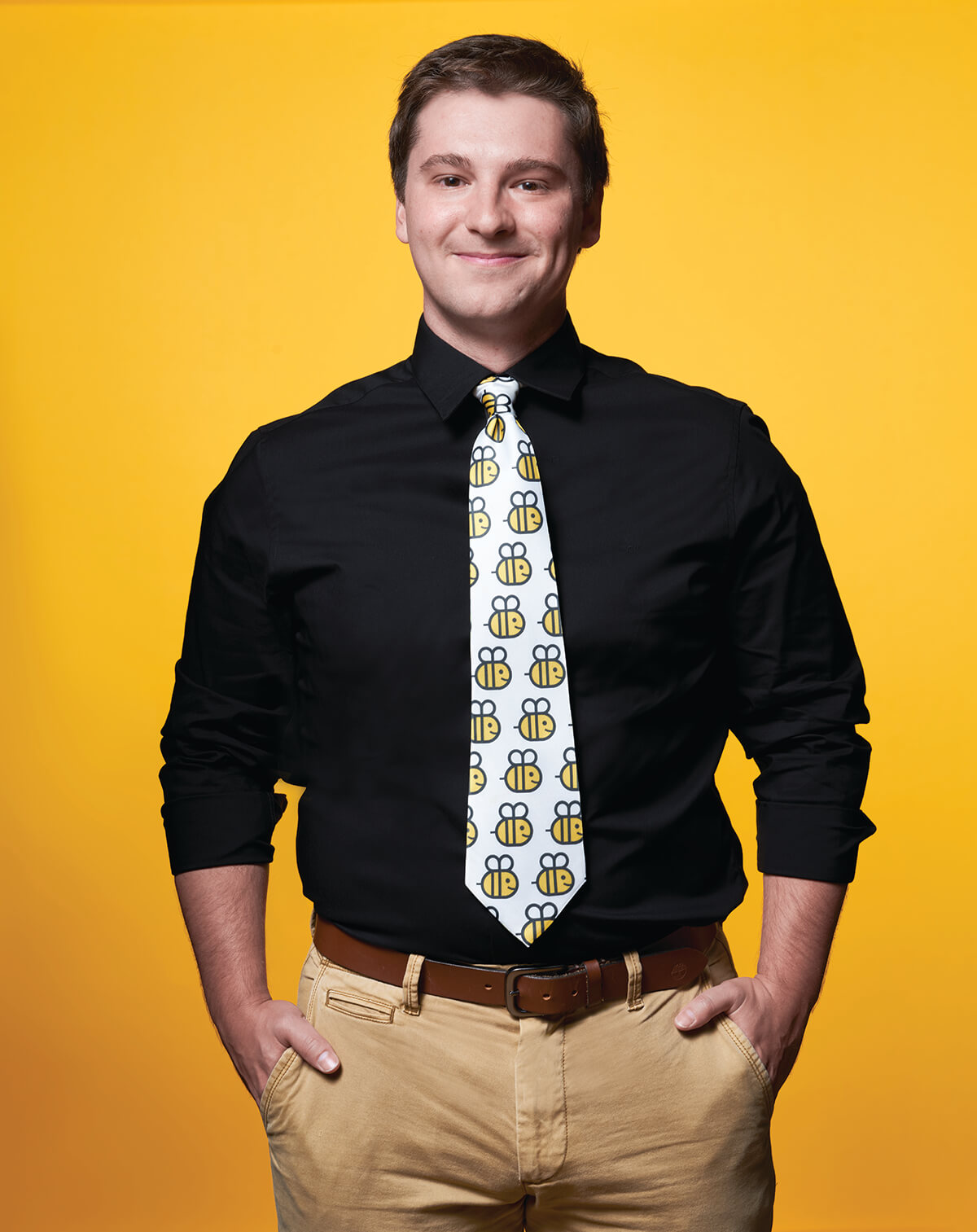Arts & Culture
The ‘New York Times’ Spelling Bee Editor is Proud of His Baltimore Roots
Meet Pikesville-born Sam Ezersky, the man behind the 'Times' deceptively simple word puzzle presented in a honeycomb structure.

It wasn’t that long ago that the phrase “Spelling Bee” invoked precocious children lined up in the annual Scripps competition tackling words like “eudemonic” and “smaragdite.” Now, more often than not, it refers to the addictive New York Times puzzle that has become something of a national obsession—for word nerds, at least.
The man behind Spelling Bee is 28-year-old Sam Ezersky, who was born and partly raised in Baltimore (Pikesville, to be exact, where his father and stepmother still live). He’s quick to assert his Baltimore bona fides: He went to the Jewish Community Center for preschool and Calvert School for his first years of elementary. He has been known to “polish off about a dozen” crabs in a single sitting. He’s also a huge Orioles and Ravens fan, even proclaiming his loyalty in enemy territory (the Times newsroom).
The first time he did a puzzle, he was about five years old and sitting at a local Hair Cuttery. He found a magazine with a “Fill-It-In”—basically a crossword without clues, just words that you slot into the grid.
“It was genuinely love at first sight,” says Ezersky. From there, he got into real crosswords. His hero, unsurprisingly, became the famed Times crossword creator, Will Shortz.
By high school, Ezersky began sending him puzzles. He got rejected a bunch, but the budding puzzlemaker got on Shortz’s radar. Ezersky’s first published puzzle actually wasn’t in The New York Times, but The Los Angeles Times, which had the benefit of being syndicated in his hometown Sun.
From Pikesville, his proud-as-punch nana—an avid crossworder herself—framed the puzzle, along with his acceptance letter, and a copy of his first check. It’s hanging on the wall in his home office.
“THE MORE GAMES PEOPLE PLAY, THE BETTER.”
In 2017, just out of college, he was hired by the Times to be one of three crossword editors. For a while, that meant reading, evaluating, and editing submitted crosswords (for style, clarity, and fun), which he still does today.
But then, in 2018, he was told about the launch of the Spelling Bee, a deceptively simple word puzzle presented in a honeycomb structure—and Ezersky was going to be its editor. His first thought was a half-hearted “cool.” He assumed Spelling Bee would be a small task and extra bit of work, but not the defining project of his career.
He distinctly remembers the day in early 2020 when he realized that it had become a big deal—like a really big deal. Just for some background: Ezersky doesn’t actually create the Spelling Bee puzzles from scratch. He chooses enjoyable puzzles from a massive computer database, which he likens to “dumpster diving.” But on that day, he picked a puzzle, thought it was everything it needed to be—tricky, but not too tricky, fun to play, clear. But one thing he hadn’t realized: The puzzle was a bit out of date, so it didn’t include the word “clickbait.”
The next day, his Twitter (now X) mentions were filled with angry people complaining about the omission. Among them: Steve Martin (yes, that Steve Martin), who tweeted at the paper, “You’ve got to get out more.”
He has lots of theories for why the Spelling Bee took off: People were bored and looking for something to do during the pandemic. Also, it was a “diversion from the world around us,” which had become increasingly grim. And lastly, it “brings people together”—friends, family, and strangers alike huddle together to discuss, solve, and, yes, grouse about the puzzle.
So, does he feel competitive with Wordle, another Times game that took off during the pandemic?
“Definitely not!” says Ezersky. “I think the more games people play, the better.”